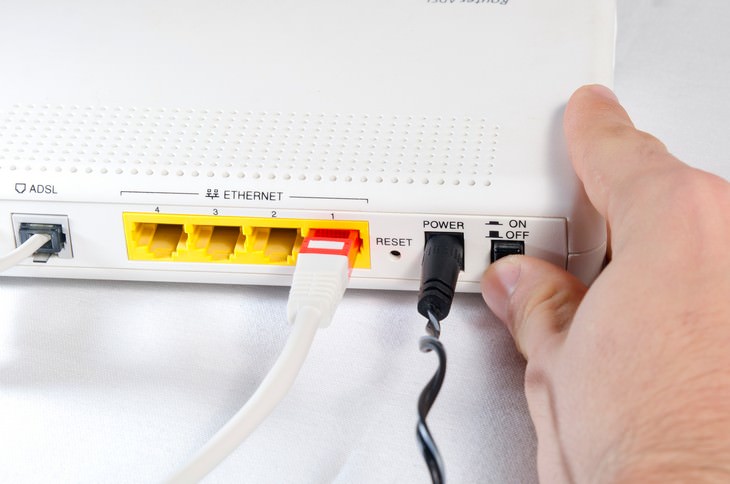You’re trying to do something on your computer or smartphone, maybe send an important e-mail or enjoy some Netflix. But things aren’t going to plan...the page is not loading. ‘Not again,’ you think in frustration. Internet connection problems are extremely common and in this day and age, when we’ve become so dependent on the web that not being able to connect can really make you feel like you’re in the Dark Ages. But don’t worry. For your convenience, we have compiled 4 prevalent reasons for internet connection problems and how to solve each situation.
1. Your router needs a reboot
One of the most common reasons for internet connection malfunctions is an issue with the router. Fortunately, it can often be solved by simply rebooting the router.
Your wireless router will have a series of icons that mean different things. Grab your user manual to find out what each icon represents. You want to pay attention to the one that designates connection to the internet. If that light is off, the Wi-Fi isn’t channeling an internet connection. If it’s on, the internet service itself isn’t working. Before you do anything else, restart your router and modem. You might have just temporarily hit a bug, and the quick reboot will fix it.
Related: 6 Simple Fixes to Try When Your PC Won’t Boot
2. Wrong internet or network configuration

Network configuration is the process of setting up a network's controls, flow, and operation to support the network to communicate. This broad term incorporates multiple setup processes on network hardware, software, and other supporting devices and components.
Usually, when you buy a wireless router or a new phone, the settings are automatically sent to you by your network provider or they come pre-installed on the device. But sometimes you might find yourself switching networks for better deals at which point you need the new service provider’s internet settings.
In that case, you need to check and ensure that everything is properly configured. That can usually be done through the settings table on your device. Resetting or updating the settings might be the way to fix the problem. The steps vary depending on what kind of device you’re using (PC, Mac, version of Windows, etc.) so it would be best to take a look at the manual for your specific device and follow the steps specified there to solve the issue.
3. The problem is with the device

Sometimes, it’s the device that is causing the problem rather than the network itself. To double-check, try another device, such as a smartphone or a tablet, and see if it will connect to Wi-Fi. If a different device connects, that means it is not the internet that’s faulty. There are a few steps you can take to fix the problem:
- Make sure the device’s Wi-Fi is turned on. If it’s on your computer, there should be a button or switch that you can press/flip to turn the Wi-Fi on and off, manually. If you determine that your computer’s Wi-Fi is off, switch it on and try to connect again. If it’s with a smartphone or tablet, go to Settings and connect to Wi-Fi from there.
- If you still can’t connect to the internet, reboot your device. Oftentimes, a simple reboot will fix simple problems, as it allows the device to reset itself.
- If restarting doesn’t fix the issue, go to your network preferences to make sure that you’re signing in to the correct network. Also, check if you’re entering the correct password. Enter the password carefully and slowly, one letter/number/character at a time. Make sure that the caps lock isn’t on. Wi-Fi passwords are case-sensitive so make sure you enter each character correctly.
Related: This is What is Slowing Your Computer Down
4. Virus or malware
Viruses and malware can significantly affect your ability to connect to the internet. Run a quick scan for viruses using antivirus software to eliminate that option. Certain computers such as Windows 10 come with a virus scanner included, but if your computer does not there are software applications you can download that will do a good job.
If you found this article helpful, share it!




